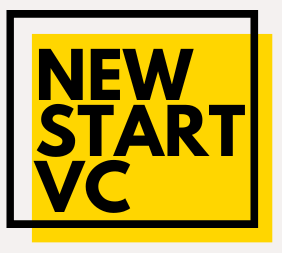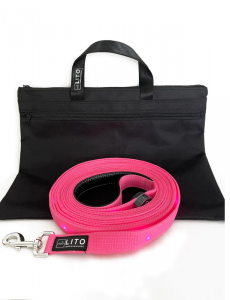As a startup entrepreneur, you know that getting venture capitalist funding is one of the most important steps in your business journey.
Here are some tips to help you get started:
1. Understand your industry
If you don’t know what your industry is, you won’t be able to convince venture capitalists that your company has the potential to be successful. Do your research and learn as much as you can about the industry you’re aiming to enter.
2. Build a compelling business case
Your business case is the key piece of evidence that will convince a venture capitalist to invest in your company. Make sure you can provide detailed and compelling evidence of the potential of your business, including figures and metrics.
3. Demonstrate traction
If you can show that your company is making progress and generating revenue, venture capitalists will be more likely to invest. Showcase your recent achievements and show that your company is on the right track.
4. Be prepared to answer tough questions
Venture capitalists are experienced investors, and they will want to know everything about your company. Be prepared to answer tough questions and be willing to explain your business in detail.
5. Be persistent
Don’t give up after the first few rejections. Keep pitching your business to different venture capitalists and build a strong network of support. Eventually, you will find a venture capitalist who is interested in investing in your company.
How to get venture capitalist funding?
There are a few ways to get venture capitalist funding:
1. Use crowdfunding platforms to solicit small investments from a large number of individuals.
2. Propose an innovative business model to venture capitalists, who may be willing to invest in a company that is able to provide a unique and innovative solution to a problem.
3. Develop a strong network of influential people who can provide introductions to potential investors.
4. Find a sponsor who can provide financial backing and exposure for your venture.
5. Collaborate with other entrepreneurs to form a startup accelerator or incubator, which can provide access to valuable resources and advice.
What are the best ways to get venture capitalist funding?
There are a few ways to get venture capitalist funding:
1. Pitch a new business model
2. Show early traction with a prototype
3. Demonstrate a strong team and track record
4. Prove that the business can be scaled
5. Secure a high-profile endorsement or partnership
What are the most common reasons startups fail to get venture capitalist funding?
There are a variety of reasons why startups may not be able to get venture capitalist funding, but the most common reasons are when the startup does not have a clear path to profitability or when the founders are not experienced or well-known in the tech industry. Many startups also struggle to find the right investors, and some founders feel that they do not fit the “ideal” venture capitalist profile.
What are the most important things to keep in mind when seeking venture capitalist funding?
When seeking venture capitalist funding, it is important to keep in mind the following:
-VCs are interested in investing in early-stage companies that have the potential to become successful.
-VCs want to see a clear business plan and evidence of success.
-VCs are interested in companies with a good team and a strong concept.
How do you know if your startup is ready to receive venture capitalist funding?
There are a few things you should consider before embarking on a venture capital fundraising journey:
-Is your startup scalable? How many people can it support?
-Is your startup differentiated from its competitors?
-Is your startup profitable?
-Can you provide definitive proof of concept?
-Is your startup management team experienced and qualified?
-Do you have a clear business plan and roadmap?
-Is your startup culture and team conducive to success?
-Do you have a solid team of advisors and partners?
Once you’ve answered these questions, you can begin to measure your startup’s readiness for venture capital. Some key indicators include:
-Length of time in business (if it’s less than two years, you may need to provide more assurance that your business is scalable and differentiated).
-Number of customers and employees.
-Revenue and profitability.
-Content and design of the website.
-Amount of fundraising done to date.
-Proof of concept or prototype.
-Business model and competitive landscape.
If you’re happy with the answers you receive, then you’re ready to move on to the next step: assembling a team of advisors to help you navigate the venture capital process.
crane finance loans is a business that provides short-term loans to businesses and entrepreneurs. The loans are available in a variety of terms and have low-interest rates. The company offers a fast and easy application process and quick turnaround times.
What are crane finance loans?
Crane finance loans are loans that are made to companies that own cranes. These loans are typically used to finance the purchase of new or used cranes. The loans are typically made by banks or other financial institutions.
How do crane finance loans work?
Crane Finance loans are a type of loan that is offered by banks and other lenders. The loan is typically offered to businesses and individuals who need short-term financing to help them meet their financial obligations. The loan is typically offered in a number of different formats, including short-term loans, long-term loans, and commercial loans. The loan is typically offered with a number of different terms and conditions, including a number of different interest rates.
The main advantage of using crane finance loans is that they are typically short-term loans. This means that the loan can be used to help cover immediate financial obligations, such as paying bills or buying inventory. short-term loans are also typically easier to get than long-term loans. This is because lenders are usually more willing to offer short-term loans than long-term loans to businesses and individuals who are likely to be able to repay the loan.
The main disadvantage of using crane finance loans is that they are typically short-term loans. This means that the loan can be used to help cover immediate financial obligations, but it is not usually a good option for businesses and individuals who need long-term financing. long-term loans are typically more expensive than short-term loans, but they are generally easier to get and are more likely to be able to help businesses and individuals meet their long-term financial obligations.
Overall, crane finance loans are a good option for businesses and individuals who need short-term financing to help them meet their financial obligations. They are typically easier to get than long-term loans, and they are typically cheaper than other types of loans.
What are the benefits of crane finance loans?
One of the benefits of crane finance loans is that they can provide businesses with much-needed short-term liquidity. This can be especially beneficial to businesses that are experiencing financial difficulties and need to quickly raise additional capital. Additionally, crane finance loans can help businesses increase their borrowing capacity and access new sources of financing.
What are the risks of crane finance loans?
There are a few risks associated with crane finance loans. The most common risk is that the crane will not be used for the planned project, or it will not be used at all. If the crane is not used, the loan may not be paid back and the lender may lose money. Another risk is that the crane may be damaged in use and the lender may have to pay to have it repaired or replaced. Finally, the crane may not be able to reach the project site, which could lead to delays and cost overruns.
What are the best practices for using crane finance loans?
The best practices for using crane finance loans are to:
-Understand the terms of the loan
-Be aware of possible risks
-Be prepared to make a quick decision
-Be prepared to repay the loan promptly









